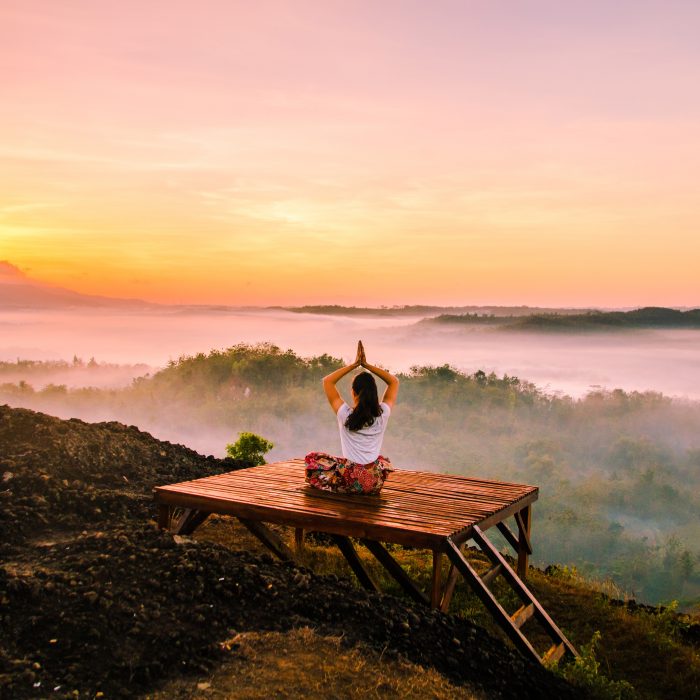Most of us think of yoga as a healing practice.
But yoga today has strayed far from its original Eastern roots and often falls short of that expectation.
In its present form, yoga has been skewed from its original state and repackaged in such a way that people who come to yoga seeking more than a physical transformation are left wanting. Hoping for transformation through yoga, they often end up as “spiritual casualties,” falling short of true resolution, recapitulating the hurt over and over on the yoga room floor.
As yoga teachers, it’s our calling both to bring yoga back to its roots, and to move it forward into a practice that provides holistic healing for 21st century seekers—a practice that actually brings our students to the mental, emotional, physical, and spiritual state of yoga.
As yoga instructors, we know that yoga, as a state of mind and spirit, is accessible to everyone—as long as they have the right tools. And whether you realize it or not, your students look to you for guidance and insight not just on postural alignment, but on the alignment of their spirits to the truth.
Wondering how to actually do this? It starts with educating yourself. Here are some of the most common spiritual questions yoga teachers get asked, and how to make sure you’re ready for them.
1. “How do I become more spiritual?”
It’s a broad question and might feel overwhelming, but it’s something you can handle if you’re prepared. While spirituality means something different to everyone, at its core, it’s simply a personal mythology. A personal mythology is the development of a holistic belief system derived from the symbols and archetypes that are most alive within you; it incorporates personal ritual and a moral code alongside a structure for personal development.
Have you identified and embraced your own personal mythology? If not, that’s your first step. Once you have, you can begin learning how to guide others to the resources that will help them do the same.
2. “How do I integrate yoga into my daily life?”
While still a big question, the answer to this one is less abstract and more familiar to yoga teachers: dharma, or the mission of the spirit. Though most yoga instructors are aware of the concept of dharma, comparatively few incorporate it into their teaching. But a yoga practice divorced from dharma misses the point. A yoga practice that’s integrated with seeking and accomplishing the mandate of the soul, on the other hand, facilitates the integration of yogic principles and philosophy into every aspect of life.
So, integrating yoga into daily life means being aligned with your dharma. Aligning with your dharma requires honest, ongoing self-reflection. Aside from providing time in class for quiet internal reflection and giving them questions to ask themselves like, “Why am I here?” you can direct students to complementary practices like meditation and chakra alignment, as well as literature on the subject.
3. “What should I do about my relationship/job/apartment?”
If it hasn’t happened yet, it will; one of your yoga students will ask you for advice about a personal struggle they’re facing. It can leave you at a total loss. You want to be helpful, but you don’t feel remotely qualified to tell them how to live their lives. And, while the instinct not to tell them what you’d do in their situation is the right one, you can (and should) remind them that the answers they need are within. And you can help them access those answers in ways a therapist or friend never could.
Asking questions, encouraging personal inquiry, and introducing complementary spiritual practices such as astrology and tarot in your teaching means that when major life decisions arise for your students, they’ll know where to turn for answers. If you want to be a spiritual resource to your students in times like these, mastering tarot and deepening your understanding of astrology are two potent ways to start.
Equipped with the spiritual tools to reveal insights your students won’t get anywhere else, you can do more than just remind them that true alignment with the soul’s purpose brings peace. You can help them become fully immersed in the mystical practices that reveal and reaffirm our dharma all our lives.
To make modern yoga a truly transformative practice, we as teachers need to address the spiritual and psychological elements of the self, as well as the physical and mental. Otherwise, we’ll go through life with a God-sized hole in our understanding. To satisfy all the parts of ourselves, our rituals and practices must create a dialogue between conscious and unconscious, between outer and inner self.
Just as the alchemists of old transformed base metals into gold, we can do the same with the contents of ourselves through the power of yoga—and then help others do the same. Our yoga practices are the crucible by which our own transformation occurs. But it’s only when yoga transcends rote activity and functions as a spiritual pursuit that it becomes a conduit to complete healing and connection with ourselves.







Read 0 comments and reply